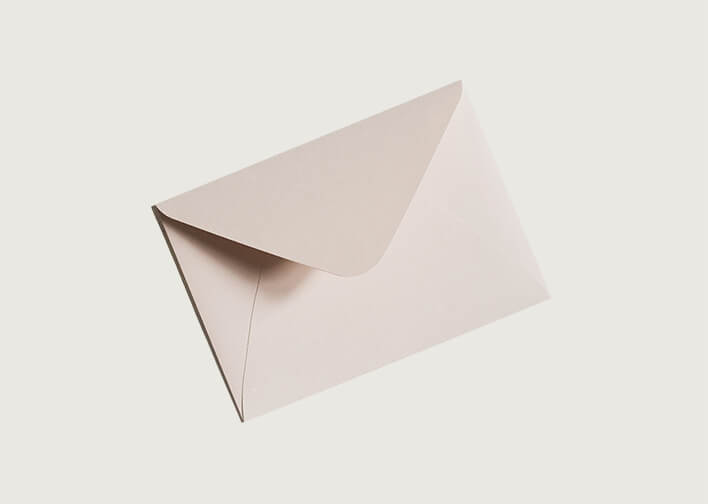9 Essential Tips For Creative & Effective Packaging Design

From supermarket shelves, to electronics and beauty products, I’m a sucker for beautiful packaging design.
To me, creative and thoughtful packaging means that the business has spent time considering the end user and customising their experience with the product. Packaging is an important part of a customer’s overall brand experience, so it’s important to consider how it looks, feels and works. Here’s 9 of my tips for crafting packaging that is user-friendly, creative and eye-catching.
1. Determine how your packaging will fit within the whole brand experience
Depending on the item, packaging can include outer packaging, inner packaging, product packaging, or all three. Whether you’re selling online or in stores, it’s important to consider all packaging as a part of the entire brand experience, not an isolated event. Your packaging should:
- Epitomise your brand personality and values
- Be consistent with other branded marketing tools
- Be tailored to the target audience
- Be more than just packaging, but a brand experience that elicits certain feelings—can you excite, inspire or delight by creating something unique or special?
For example, Go-to sells women’s skincare products online, using humorous, friendly and transparent discourse that is carried through their website, emails, social media and packaging. Their packaging includes a branded shipping box, inner packaging and product packaging. Each parcel also contains a card in the brand tone of voice, explaining how to use their products and a fortune cookie with a unique branded message. With consistency between all of their touch points, they are able to reinforce their brand message and delight their customers through exceptional experiences.

2. Consider essential functional requirements
It’s so important to make sure that you determine any essential functional requirements before you start picking out patterns and typography. Ask yourself—
- Does the packaging need to communicate any important information about the product’s use or contents (e.g. nutrition information, safety or care instructions)? Try to figure out all required information, marks or instructions before you begin the design phase so you know how much space you need to account for.
- Is the packaging protecting or sealing the product? How will this affect the design?
- Are there any specific conditions that will affect the quality of the product? Is the product affected by light? Does it need ventilation? Does it need to be waterproof? Is it kept in very hot or cold conditions?
- Will it be discarded upon opening or will it be kept until the product is completely used?
- How will it be transported or shipped? Does the packaging need to follow a ‘nesting’ structure or fit within certain size, weight or volume constraints?
These factors are the essential requirements or ‘must-haves’ so that the quality of your product isn’t compromised. They will affect the type of materials you use and the overall shape and design of the packaging, so are essential to think about before you get started!
3. Consider how your product will be used by your audience
Your product packaging should enhance the usage experience, not impede it, so it’s important to consider exactly how the product is used and the circumstances it will be used in, before you pick the design and materials. Here’s some pointers:
- Keep an eye on trends in use or consumption of your product or similar products
- Can you offer an innovation in the packaging design to make using your product easier, or more efficient? For example, single serves, on-the-go use, easy opening or resealable packs.
Choosing the wrong packaging design can have a direct impact on your sales— for example Glad’s decision to move the serrated cutter bar from the base of the box to inside the lid in 2015. There was outrage amongst loyal customers who said it was difficult to use, and the brand was forced to reinstate the previous design to avoid loss in sales.
4. Pick a clear and simple message
Often packaging is competing against other brands on shelves or online, so getting your message across quickly is essential. Overcrowding the packaging with too much information can be overwhelming, so keep your message to the point. Often this message will be limited to communicating the product you are selling, your brand name and possibly 1-2 main selling points.

5. Ensure your packaging is attractive and stands out
If your packaging design is going to be competing against other brands on shelves or online, it’s important that it looks great and stands out. But this doesn’t necessarily mean splashing it with bold colours and typography. Consider the other products in the market, and what they look like, so that you can differentiate your product. This might mean choosing unique packaging shape, a clever way to present your product, selecting an unusual or under-used colour or selecting a non-traditional design layout.
While there is scope to be creative, the design should be industry appropriate and clearly marked to avoid confusion as to how the product should be used. This is especially true of chemical products—you don’t want to risk someone ingesting your product if it looks similar to other food or drink products.

6. Don’t mislead your customers
This one really should go without saying, but sometimes brands can cross the line between creative marketing and dishonesty. From product imagery to copy, make sure that your packaging is accurate and honest. While you’ll want to show your product in the best light possible, if you have a good product and brand, there’s no need to stretch the truth. For example, the maker of Nurofen, Reckitt Benckiser was fined $1.7 million after their packaging claimed specific relief of certain types of pain, despite the active ingredients being the same for each product.
7. Aim for less waste
Reducing wastage in packaging is an important consideration, not only due to the push from consumers to be more environmentally conscious, but also due to the flow on cost savings from efficient packaging. Some ways to reduce waste include—
- Using recycled materials as a part of your packaging
- Reducing the weight and size of the product and its packaging
- Encouraging the consumer to reuse packaging (I always loved the glass Nutella jars that, once used turned into a cup).
- Finding ways to use the offcuts or byproducts of product packaging

8. Consider future packaging needs
While you might be starting off with only one product, if you think you might expand your product line at some point in the future, it’s worth telling your designer to keep this in mind. With this considered, when you are ready to launch that new flavour, scent or version, the packaging design can be easily adapted or extended for the new lines.
9. How will it be printed?
Before you get carried away with fleshing out the final design, it’s a good idea to chat to a printer and explain what you’re hoping to achieve with your packaging. Sometimes there are hurdles in printing designs on certain materials or big cost differences in the print finishings that can really impact your design and material choices. Printers can also provide die lines that your designer can use as a guide when designing the product. Printing really can make all the difference in the final presentation of your product so speaking to a trusted printer before you finalise the design can help you to create a better looking final product.

Even though our lives are filled with packaging, we rarely think about the subtleties that encourage our purchases and the reason for re-purchasing. It’s our job as marketers and designers to work with product producers to produce thoughtful, user-driven packaging design that resonates with audiences and creates cohesive brand experiences.
Do you have tips or questions about creating effective packaging? Let me know in the comments.
Continue Reading









